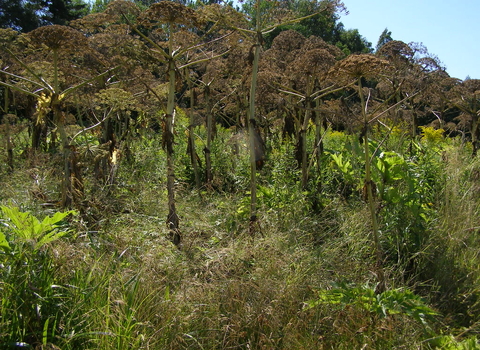
©Eva Ekeblad
Giant hogweed
As its name suggests, giant hogweed it a large umbellifer with distinctively ridged, hollow stems. An introduced species, it is an invasive weed of riverbanks, where it prevents native species from growing.

©Eva Ekeblad